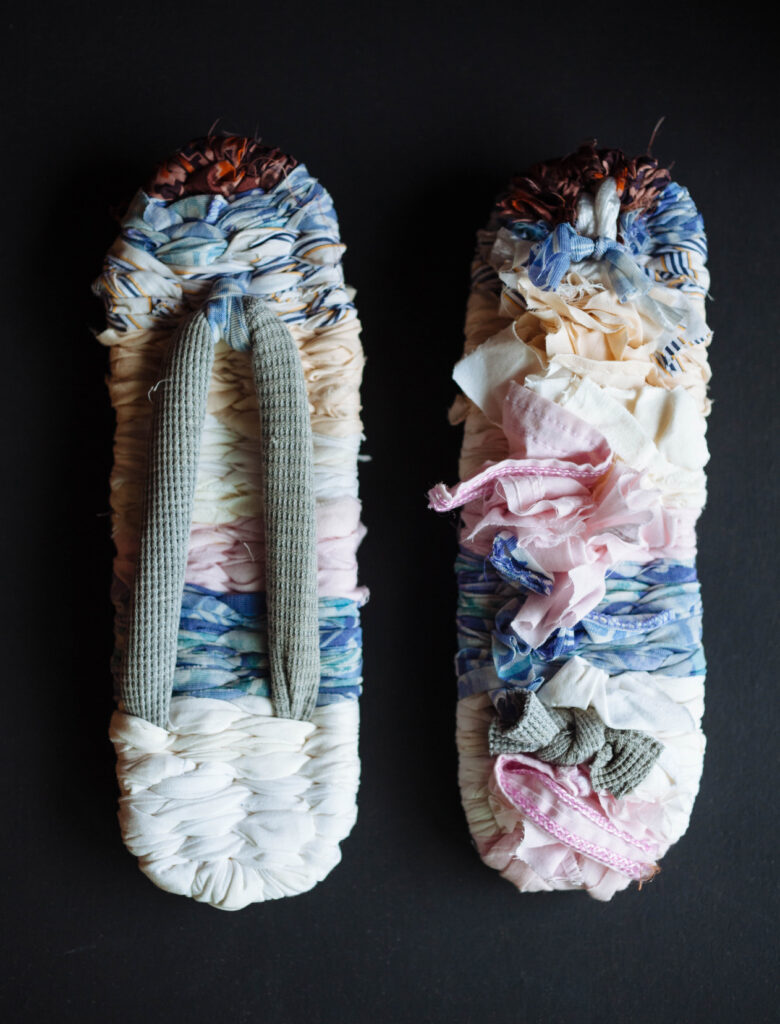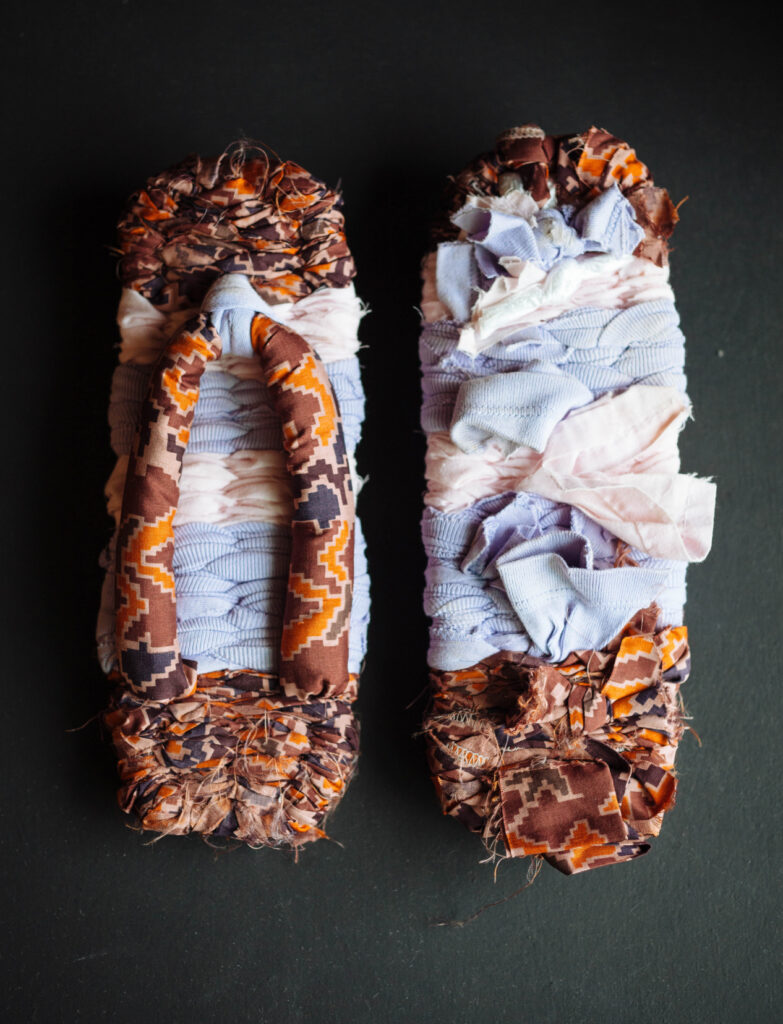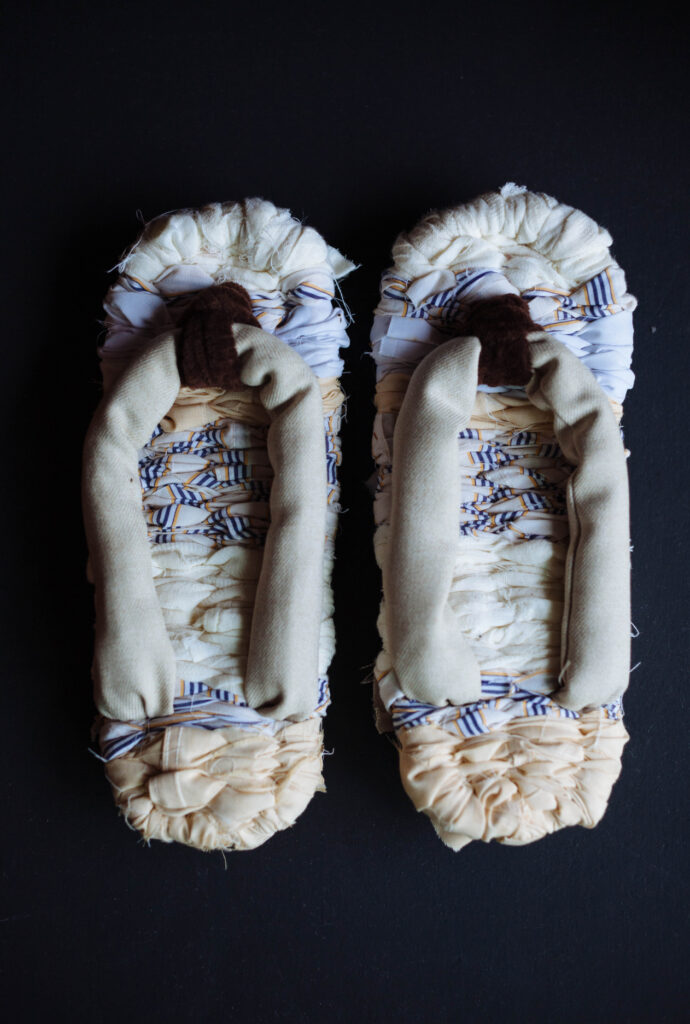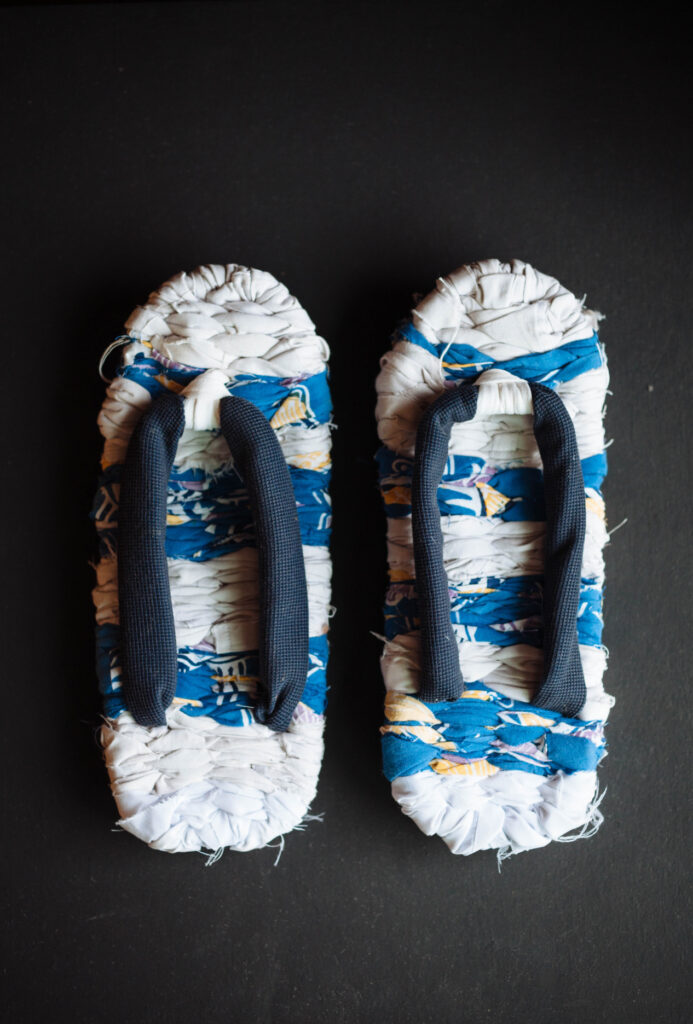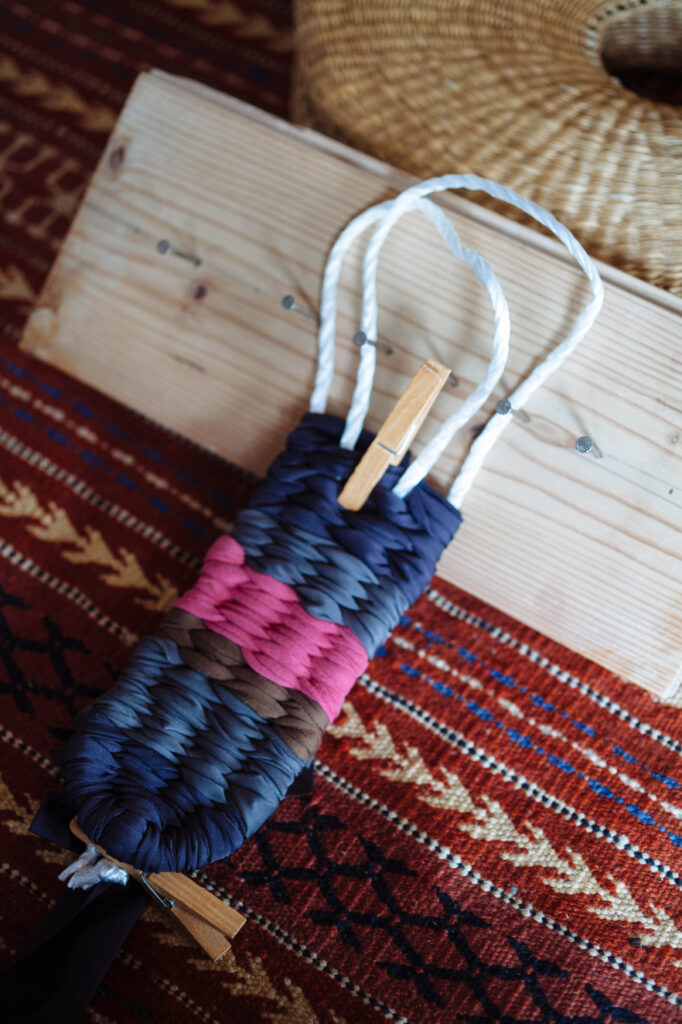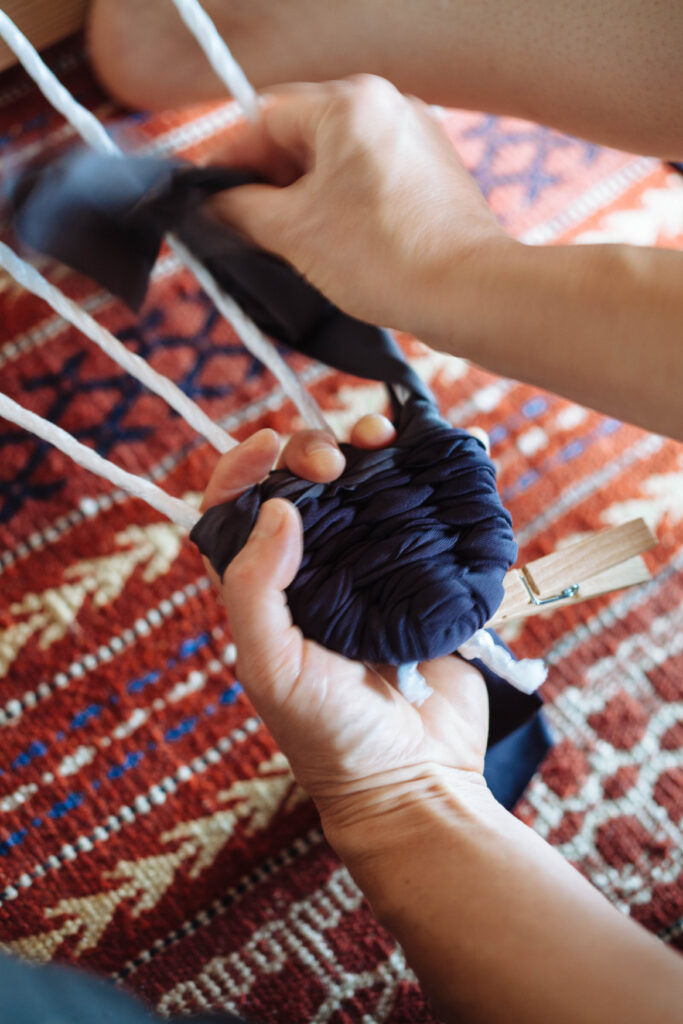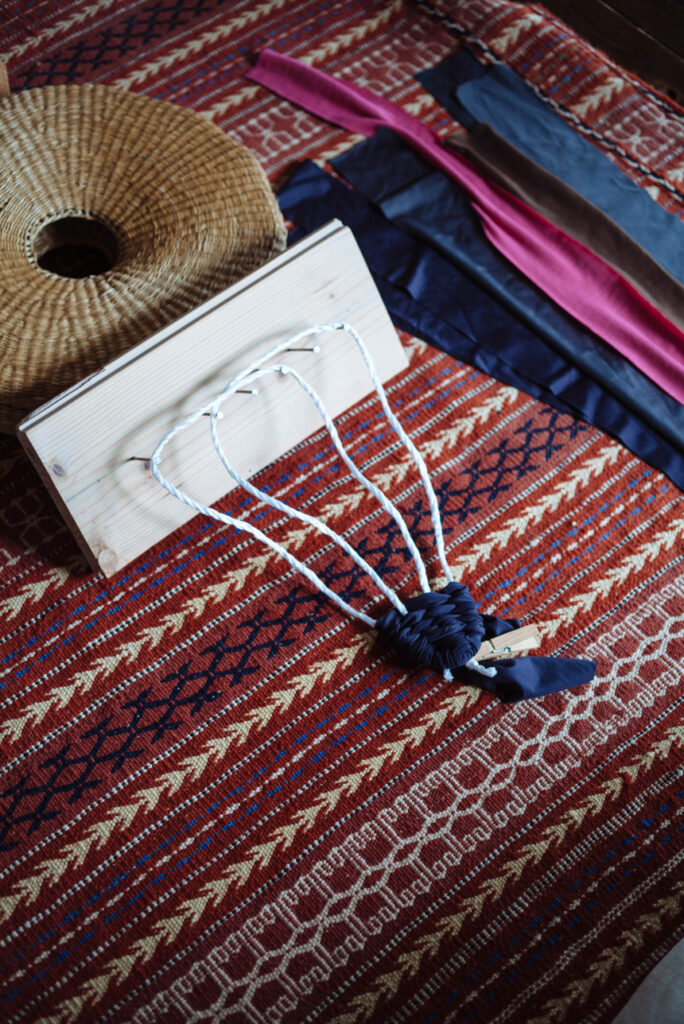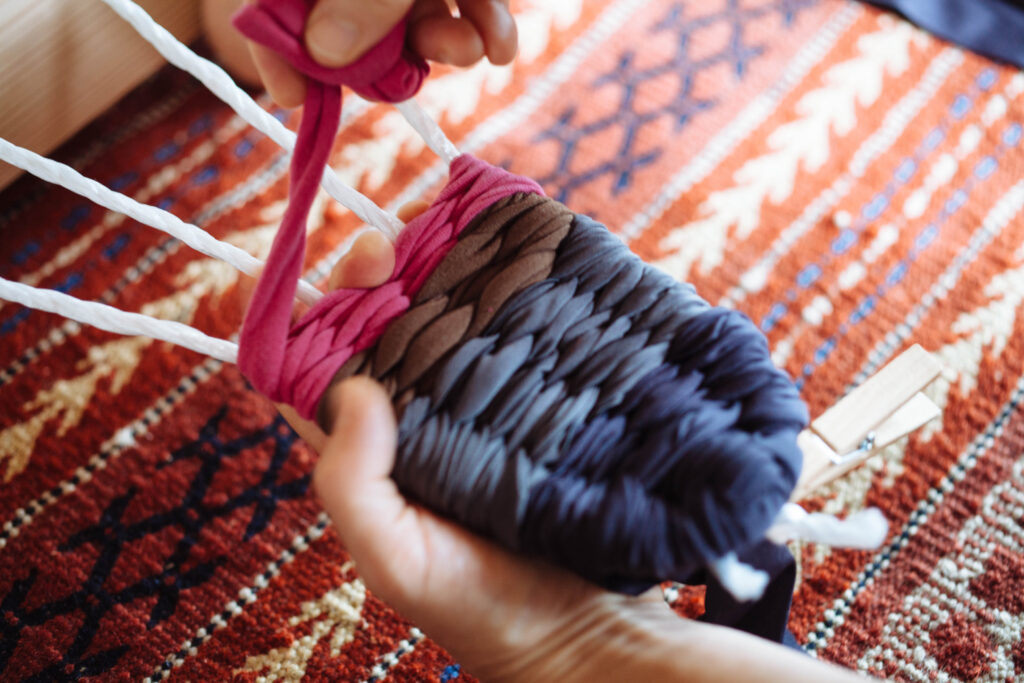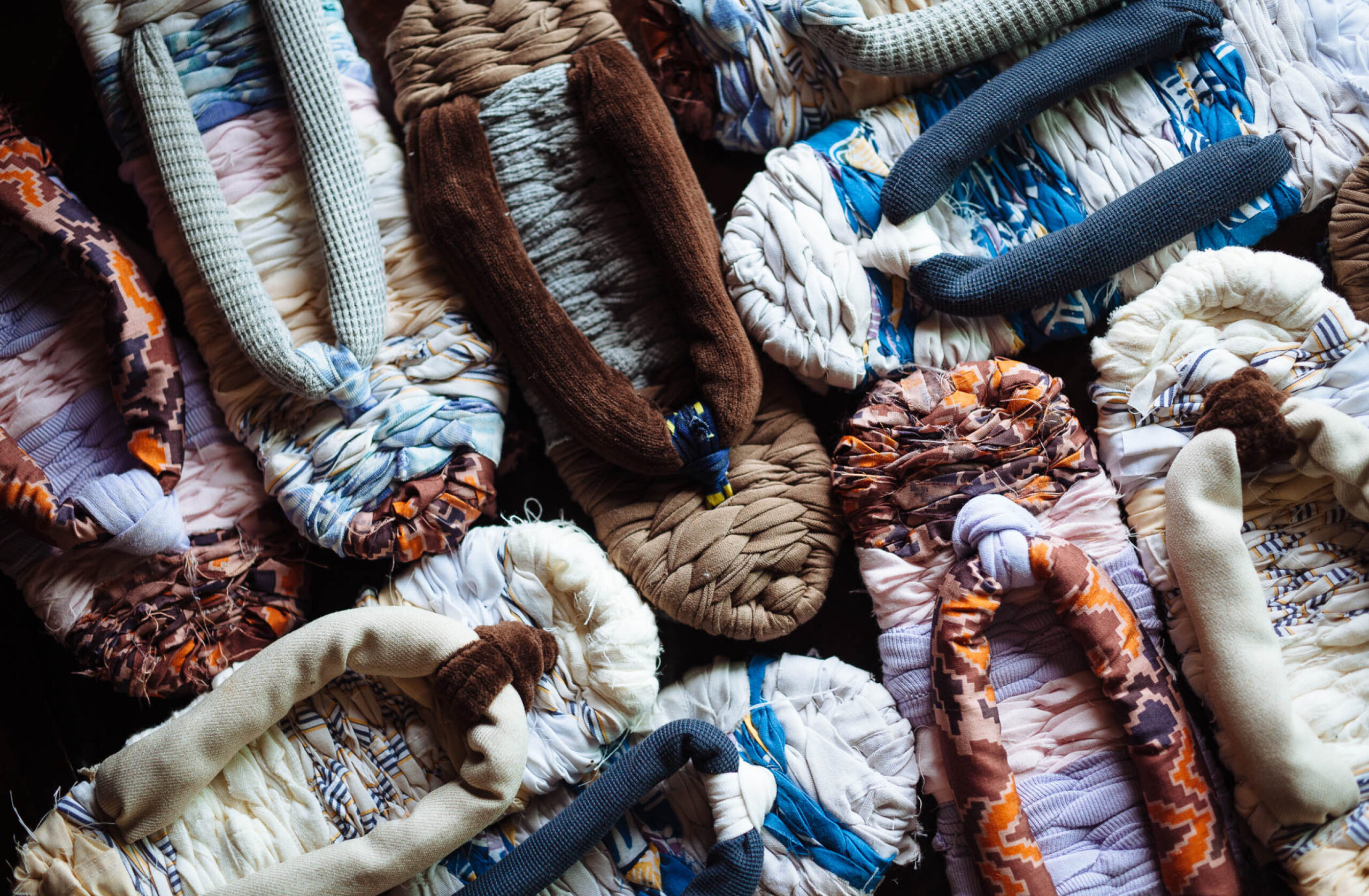
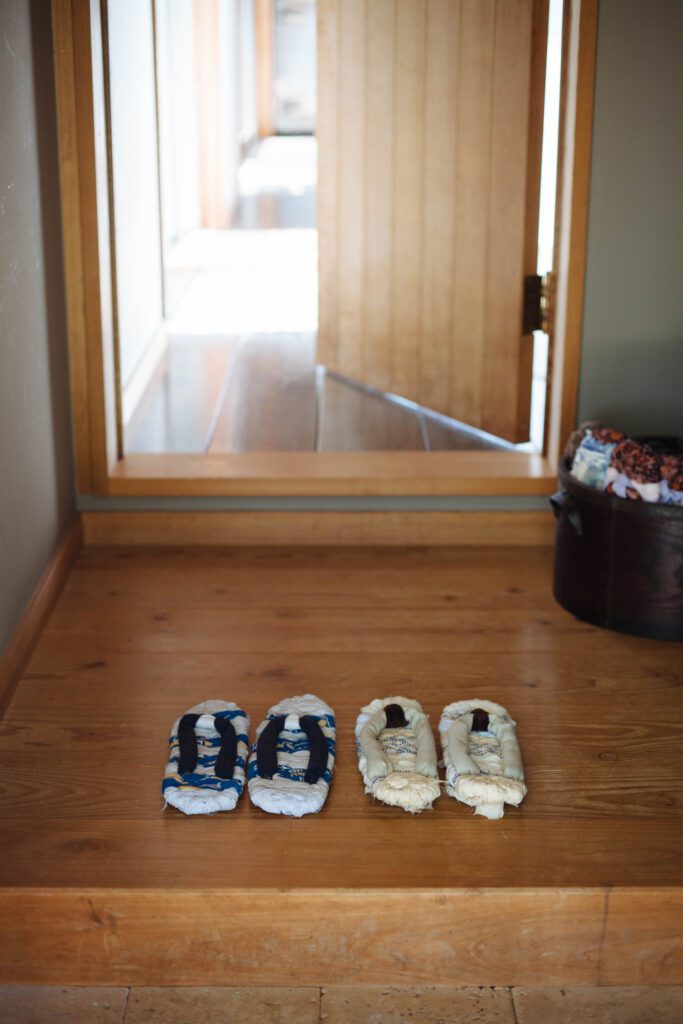
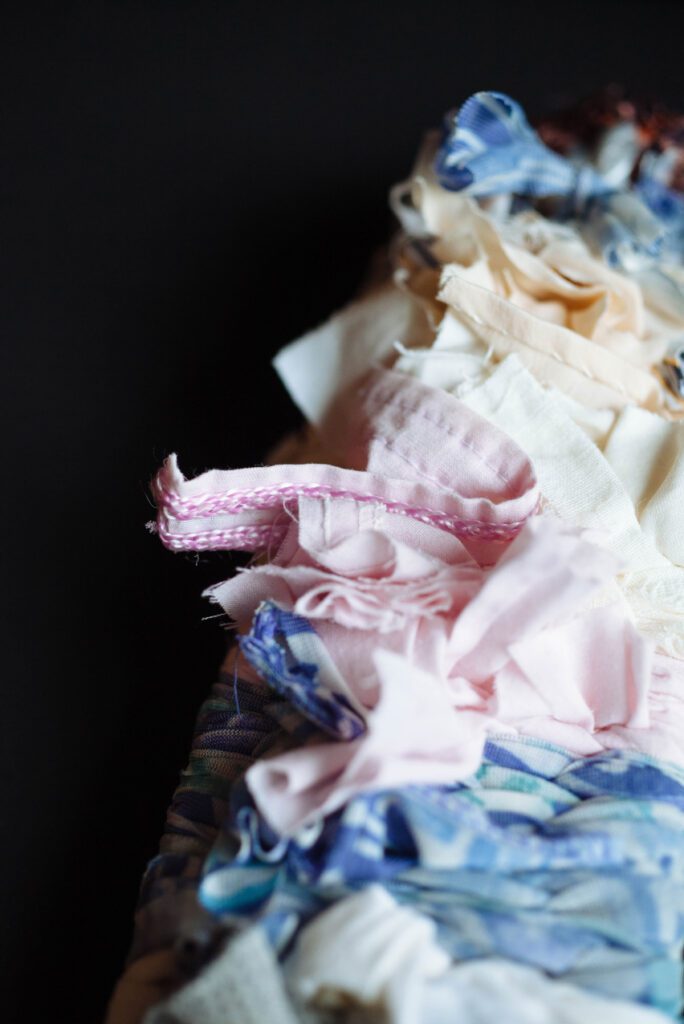
I’ve lost track of the number of people who enter my home and–after brief salutations–glance down and exclaim, “I love your slippers!” They are referring to the nunozori rag slippers that my partner makes from our old clothes.
Nunozori come from Japan, where lament of waste, expressed in the term mottainai, is deeply rooted. Mottainai can express regret, like sorrow over spoiled food. Or it can be said in recognition of a thing’s enduring value despite a deteriorated appearance, as in old clothes that have worn thin or fallen out of fashion—a thing no longer loved but holding on to potential. The physical flexibility of textiles lends itself to functional repurposing and longevity. Nunozori spare cloth the indignity of the dustbin by giving it renewed purpose.
Rag strips, the softer the better, are woven into a durable slipper that can stand several cycles in the washing machine, emerging ready to serve. It is said that walking in them stimulates pressure points, massaging tired soles as you carry on. All this while they clean and polish your floor!
In the humid climate of Japan, where rain falls frequently and shoes get wet, it has long been customary to remove them at the door so as not to bring dampness into the home. Historically, removing shoes was also the first step to keeping a tidy house, as tatami mat-covered floors are hard to clean.
Traditional Japanese architecture follows a philosophy of free space, where rooms are neither divided nor assigned an individual purpose. The same surface over which feet tread in the afternoon is host to evening meals, and becomes a platform for futons at night. Today, Western influences on architecture and customs have promoted a greater division of space, floors made of wood or tile, and the use of slippers in contemporary homes. Modeled after traditional zori footwear, which is most commonly made of rice straw, nunozori are a fairly modern invention, a Japanese revision of the Western slipper.
NUNOZORI PRESERVE AND PROLONG THE STORY OF FABRIC, AND WITH IT, THE STORY OF SELF.
The entrance to a Japanese home is through the genkan, a small room with a divided floor. One passes through the door at street level onto stone or tile paving, removing shoes to step up onto the level of the home. A genkan is often simple and bare, furnished only with a getabako, a shoe cupboard, and a vessel arranged with fresh flowers. The word genkan is written with two kanji, one that represents mystery followed by one that denotes a gateway. The same word is used to refer to the entrance to a profound path like the teachings of Zen Buddhism. The genkan is a physical space through which one transitions between metaphysical spheres, uchi and soto, inside and outside.
To traverse this border between out and in now carries more weight than ever before. There is a new and alarming risk lurking in the public sphere; and we are told that we are safest inside, at home. We no longer invite people from the outside to come in and when we return from out there, we wonder what we or they might bring in here. The virus known as COVID-19–and the fear of it–are more than can be shed at the door with a change of footwear.
Nunozori preserve and prolong the story of fabric, and with it, the story of self. As I look down and recognize a familiar color or pattern woven into my slipper, I connect with my personal history. I am reminded of a time before, when things felt easier and freer. It’s comforting to carry the before with us as we tread the worn floors of home, the safest space we know. Now enclosed, I imagine a time when the weighted division between in and out will lift, permitting us a lighter passage.
Learn more about Japanese culture, food and travel with Prairie Stuart-Wolff.

